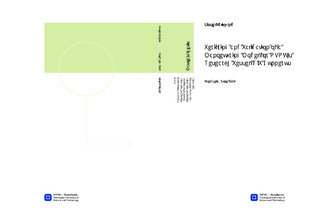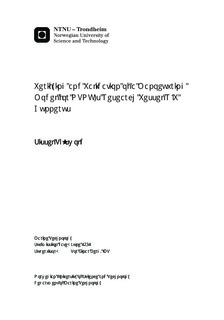| dc.description.abstract | MARINTEK's ship motion simulation program SIMAN (ShipX manoeuvring module) is used to develop a ship motion model for NTNU's research vessel R/V Gunnerus. SIMAN uses a 3-DOF linear mathematical model to describe the vessel's motions. In order to verify the SIMAN model of R/V Gunnerus, full-scale trials of R/V Gunnerus were performed in deep water in Trondheimsfjorden. Turning circles, zig-zag- and stopping tests were carried out and analysed. Data was recorded using Seapath and the DP-system installed on R/V Gunnerus. Seapath registered data at 200 Hz, while the DP-system registered data at 1 Hz. Data registration at 1 Hz turned out to be too seldom, especially for the zig-zag manoeuvres.Full-scale trials are simulated in SIMAN. Measured full-scale results are compared with simulated results, and differences between measured and simulated results are identified. It was expected that differences would occur as SIMAN is developed for conventional vessels and offshore vessels, while R/V Gunnerus is an unconventional vessel (L=28.9 m, B=9.6m). The deviations may be due to inaccurate field test results or errors in the modelling in SIMAN. SIMAN underestimated tactical diameter, transfer and advance in the turning circle manoeuvres. The difference increased with increasing rudder angle (and consequently drift angle), which may indicate errors in modelling of the non-linear damping forces. The damping forces are then modified using Oltmann's polynomial for the cross-flow drag coefficient for a tanker. This improved the results, all with the exception of transfer and advance at rudder angles of 20 degrees. It is also shown that the results are sensitive to rudder angle, so incorrect full-scale measurement will affect the results. The difference between measured and simulated zig-zag trials are significant. However, only a few seconds or degrees difference between the simulated and the measured zig-zag results cause a large percentage difference. Possible reasons for the differences are inadequate data registration of the full-scale trials, or errors in modelling in SIMAN. Overestimated results in SIMAN may indicate an unstable model. Increasing the models stability index by reducing Nv had a negligible effect on the simulated results. Decreasing rudder angle in the simulations improved the results. Track reach in the stopping manoeuvres are overestimated by SIMAN. This may be due to modelling issues as R/V Gunnerus is much smaller and responds faster than the vessels that SIMAN is developed for.In the literature there exists several empirical methods to calculate the hydrodynamic coefficients used in manoeuvring equations. The hydrodynamic coefficients of R/V Gunnerus were calculated using approaches given by Wagner Smitt, Norrbin, Inoue, Clarke, Lee and Kijima, as well as using strip theory for a flat plate. Using these coefficients did not improve the simulated results.In order to create a complete motion model for R/V Gunnerus further investigation is necessary. It is recommended that PMM tests are performed to determine the hydrodynamic coefficients. It can also be useful to investigate the non-linear damping forces. In addition, new full-scale zig-zag tests should be performed in a way that 10/10 and 20/20 tests are obtained. Performing several reruns could be used to determine the precision errors of the full-scale trials. In the literature there is a need for vessels to be used for validation of simulation tools. R/V Gunnerus can be used as a case vessel to investigate how the simulation tools predict the manoeuvring performance of an unconventional vessel. The 26th ITTC stated that there is a particular need for mathematical models for low speed manoeuvring, and vessels also used for validation of CFD-methods. R/V Gunnerus can be used as a case vessel for this research. It is then necessary to carry out tests intended for these purposes. | nb_NO |

